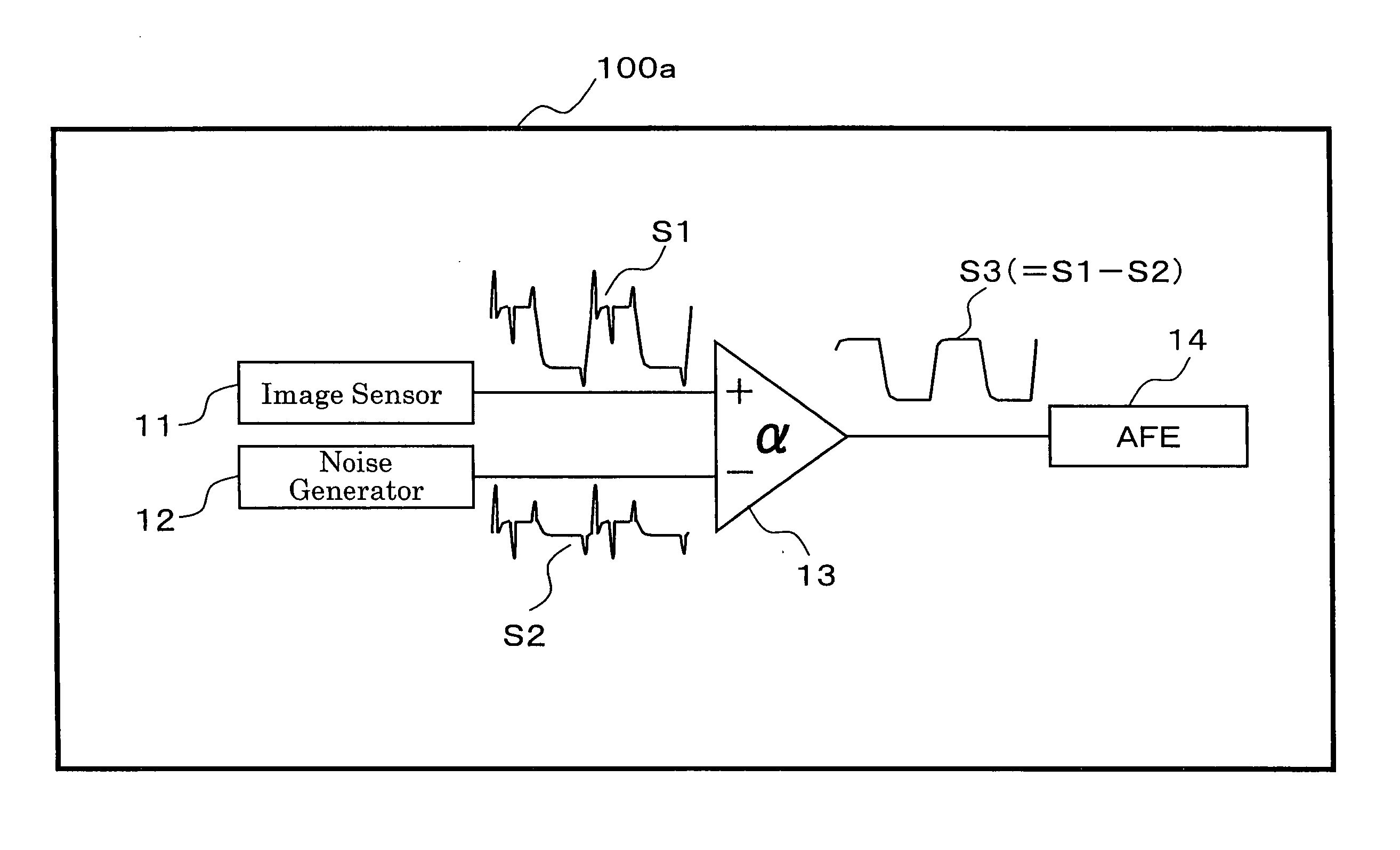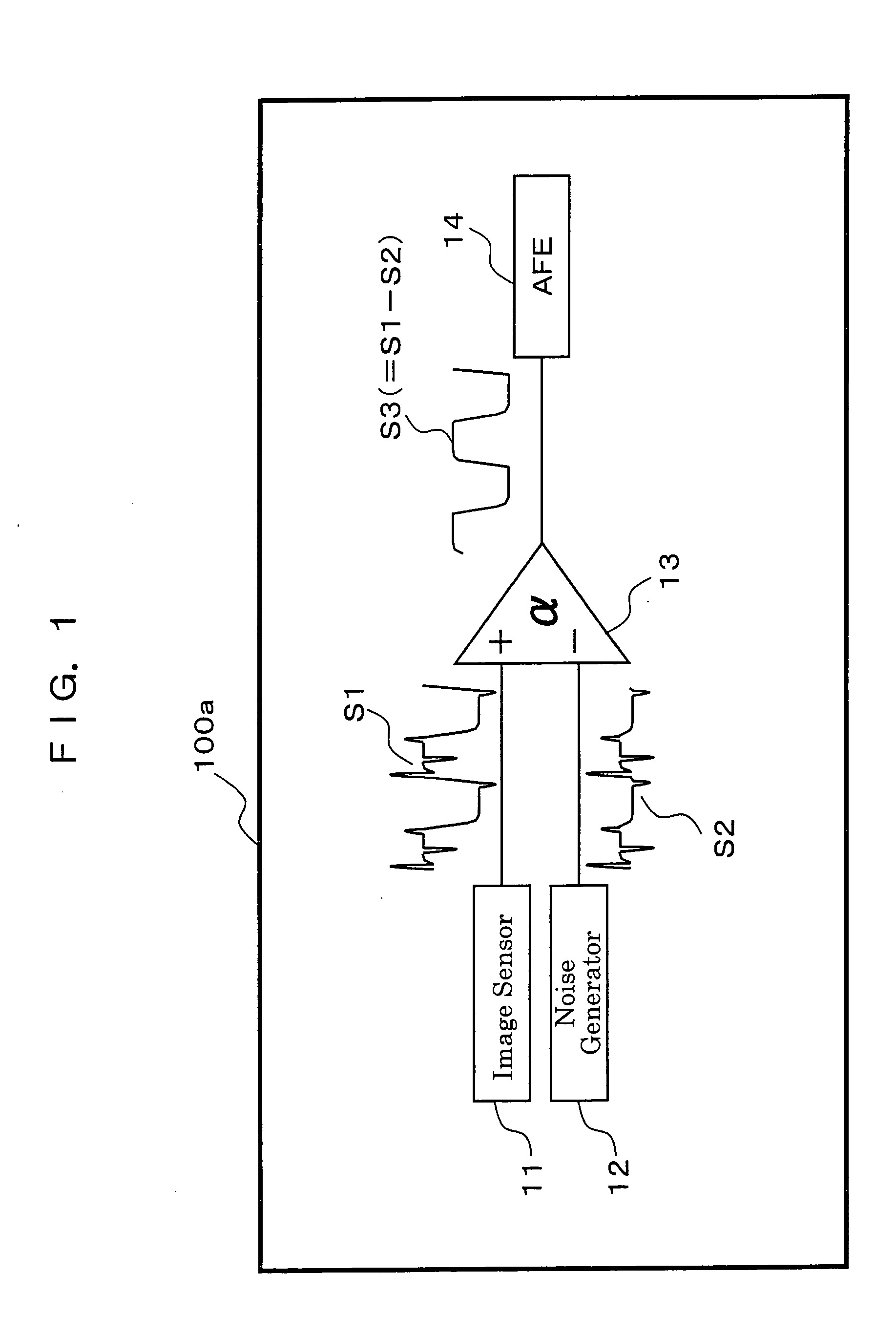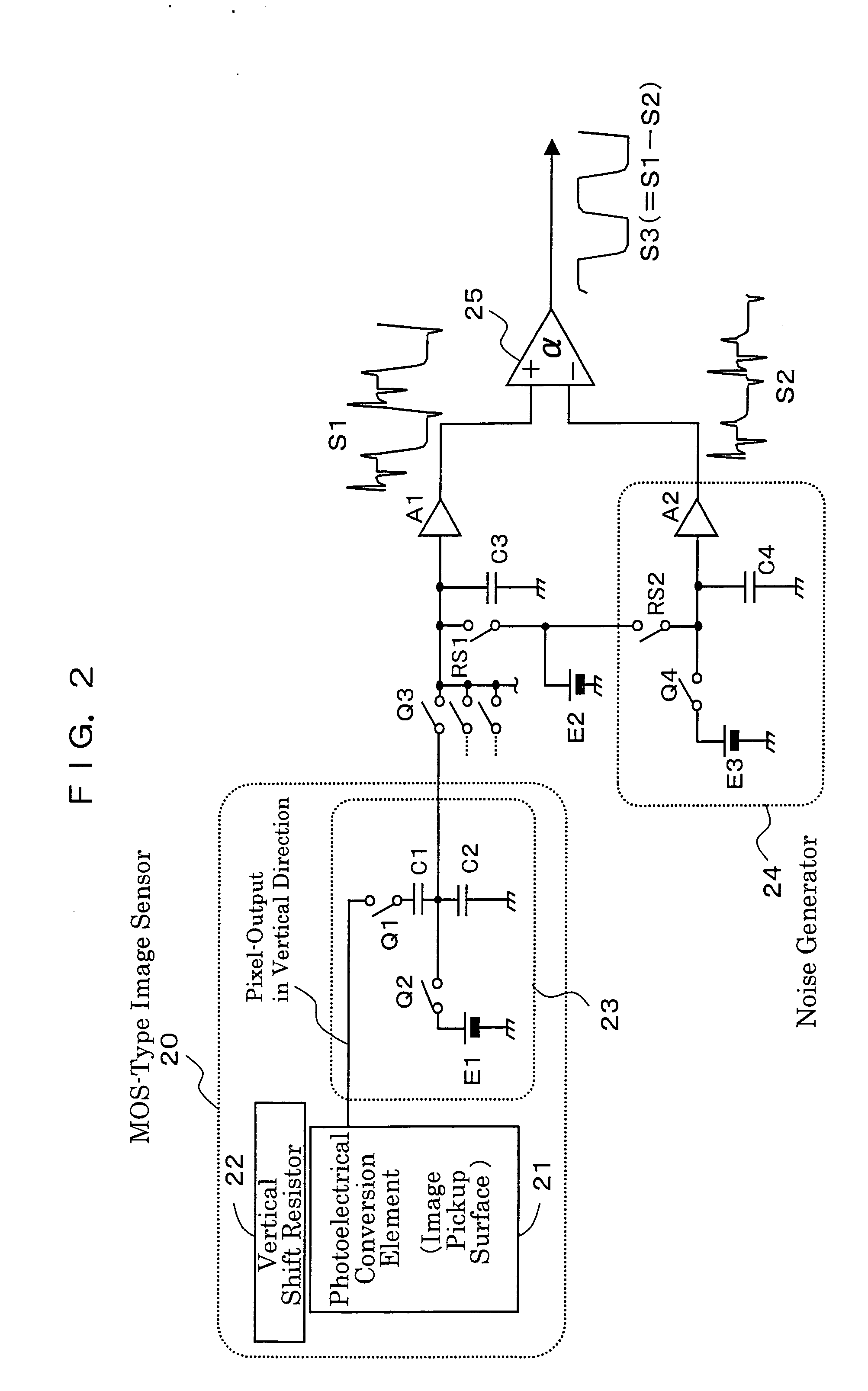Noise removing device for image sensor
- Summary
- Abstract
- Description
- Claims
- Application Information
AI Technical Summary
Benefits of technology
Problems solved by technology
Method used
Image
Examples
first embodiment
[0033] In FIG. 1 showing the configuration of a noise removing device 100a for an image sensor according to the first embodiment of the present invention for canceling the common-mode noise, numeral reference 11 is an image sensor of MOS type or CCD-type, 12 is a noise generator for generating a common-mode noise that is in same phase with the noise of the image sensor 11, 13 is a differential amplifier for carrying out amplification after subtracting the two inputted signals, one of that is an output signal S1 from the image sensor 11 and the other is a noise-reference signal S2 from the noise generator 12, and 14 is an analog front end (AFE) LSI. A noise-reference signal S2 contains 1 / f noise, low-frequency noise, high-frequency noise, shot noise, beat noise and the like generated by the noise generator 12. Numeral reference S3 is a differential amplified output signal which is outputted from the differential amplifier 13.
[0034] By the common-mode rejecting function of the differ...
second embodiment
[0053]FIG. 5 is a block diagram showing the configuration of a noise removing device for an image sensor according to a second embodiment of the present invention. In the noise removing device 100b, for the multiple outputs by N-numbers (N is natural number of 2 or more)of image sensors 51, provided is a single noise generator 52 which generates the noise in common-mode with respect to the noise of the image sensors 51. Numeral reference 53 is a differential amplifier. Here, the noise on the multiple outputs from the image sensors 51 disposed on the same mask is assumed to be substantially the same.
third embodiment
[0054]FIG. 6 is a block diagram showing the configuration of a noise removing device according to a third embodiment of the present invention. In a noise removing device 100c, for the multiple outputs by N-numbers of image sensors 51, provided are N-numbers of noise generators 52 which generate the noise in common-mode with respect to the noise of the image sensors 51.
PUM
 Login to View More
Login to View More Abstract
Description
Claims
Application Information
 Login to View More
Login to View More - R&D
- Intellectual Property
- Life Sciences
- Materials
- Tech Scout
- Unparalleled Data Quality
- Higher Quality Content
- 60% Fewer Hallucinations
Browse by: Latest US Patents, China's latest patents, Technical Efficacy Thesaurus, Application Domain, Technology Topic, Popular Technical Reports.
© 2025 PatSnap. All rights reserved.Legal|Privacy policy|Modern Slavery Act Transparency Statement|Sitemap|About US| Contact US: help@patsnap.com



